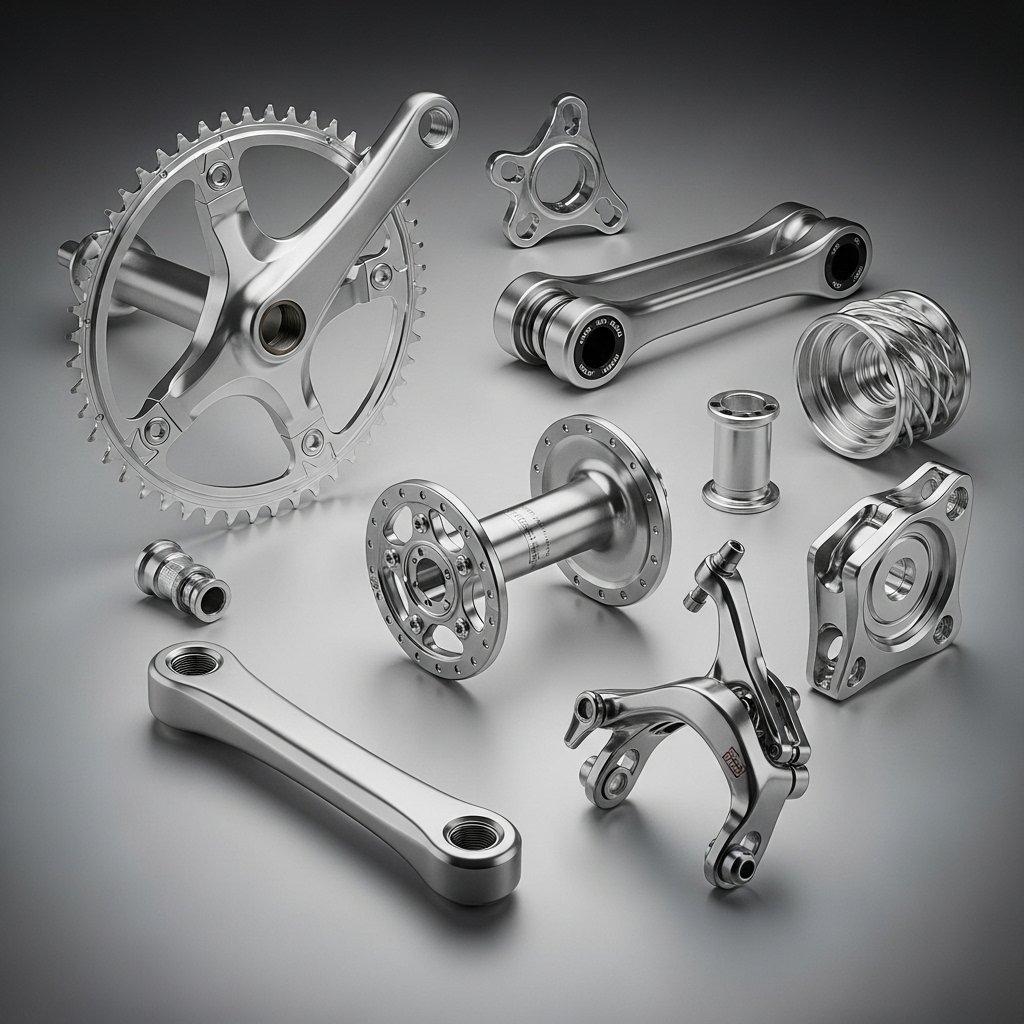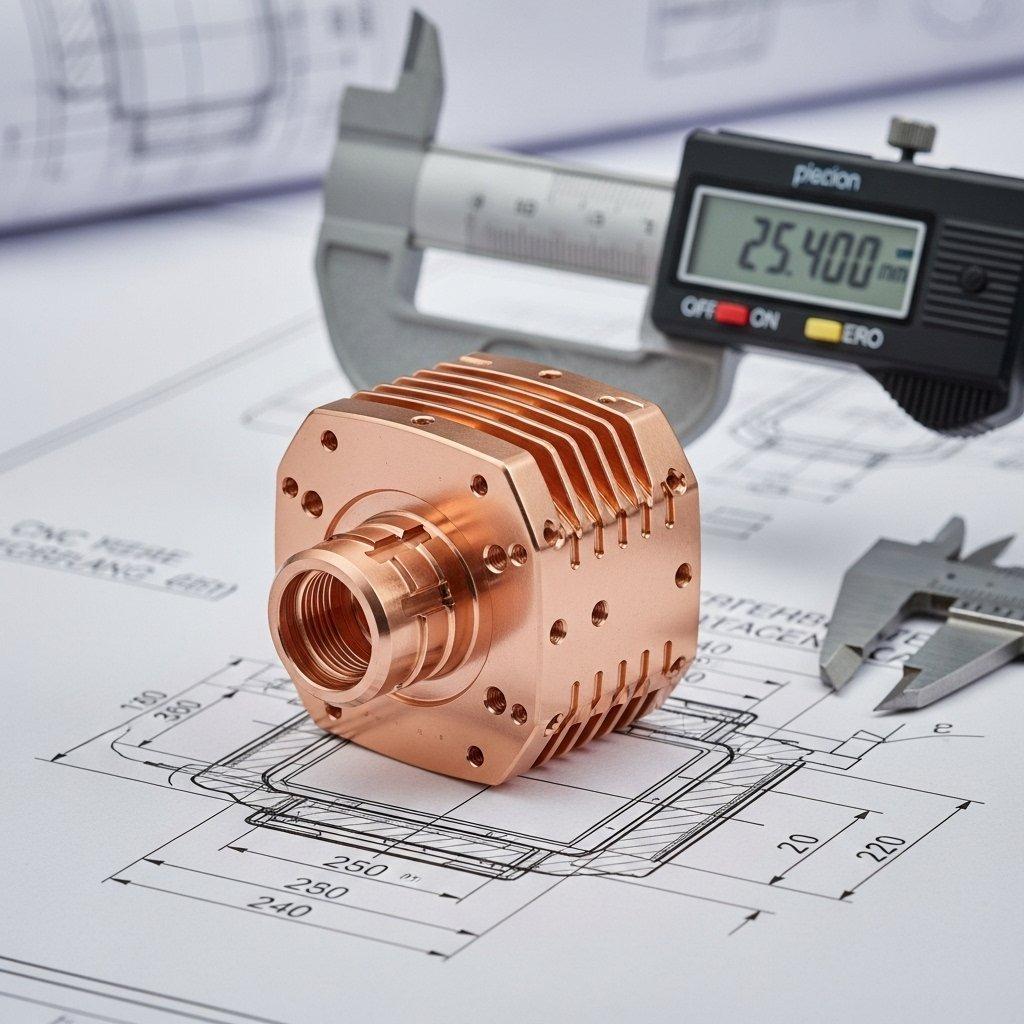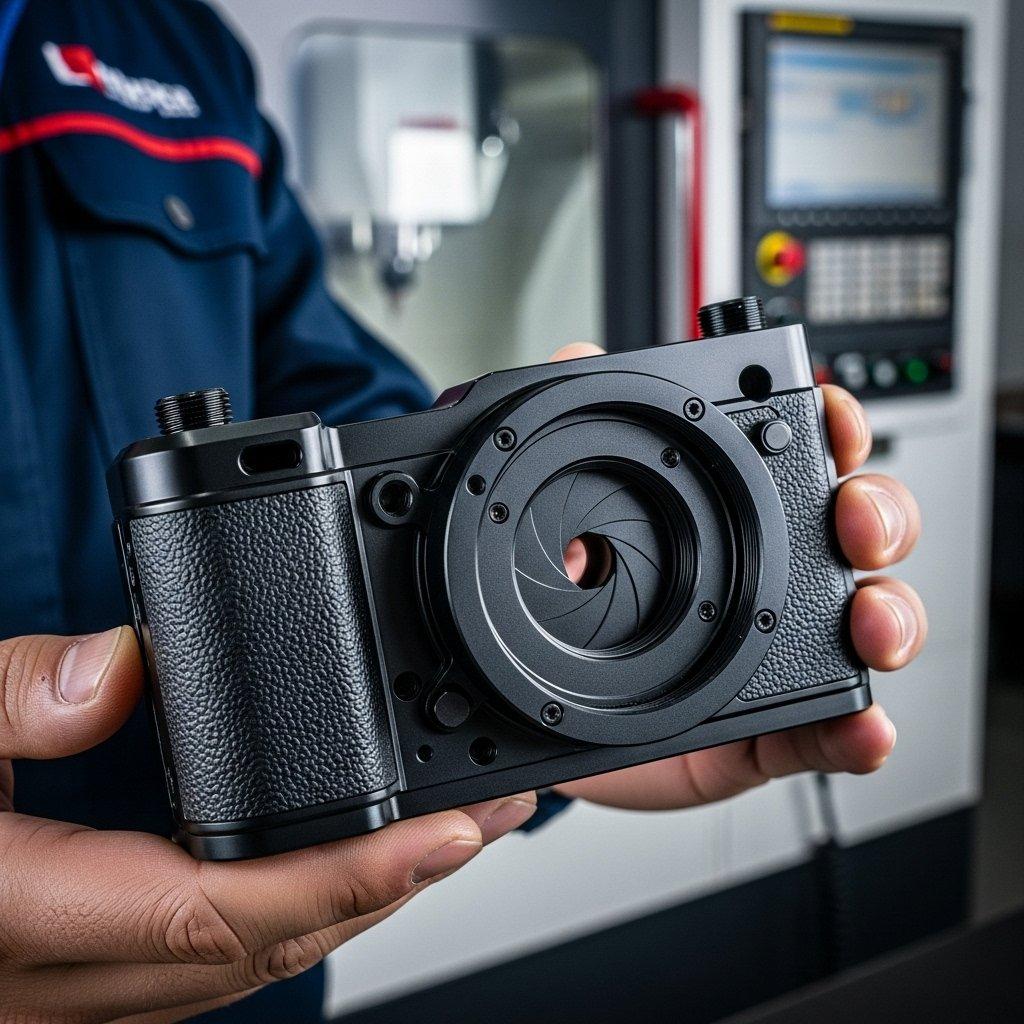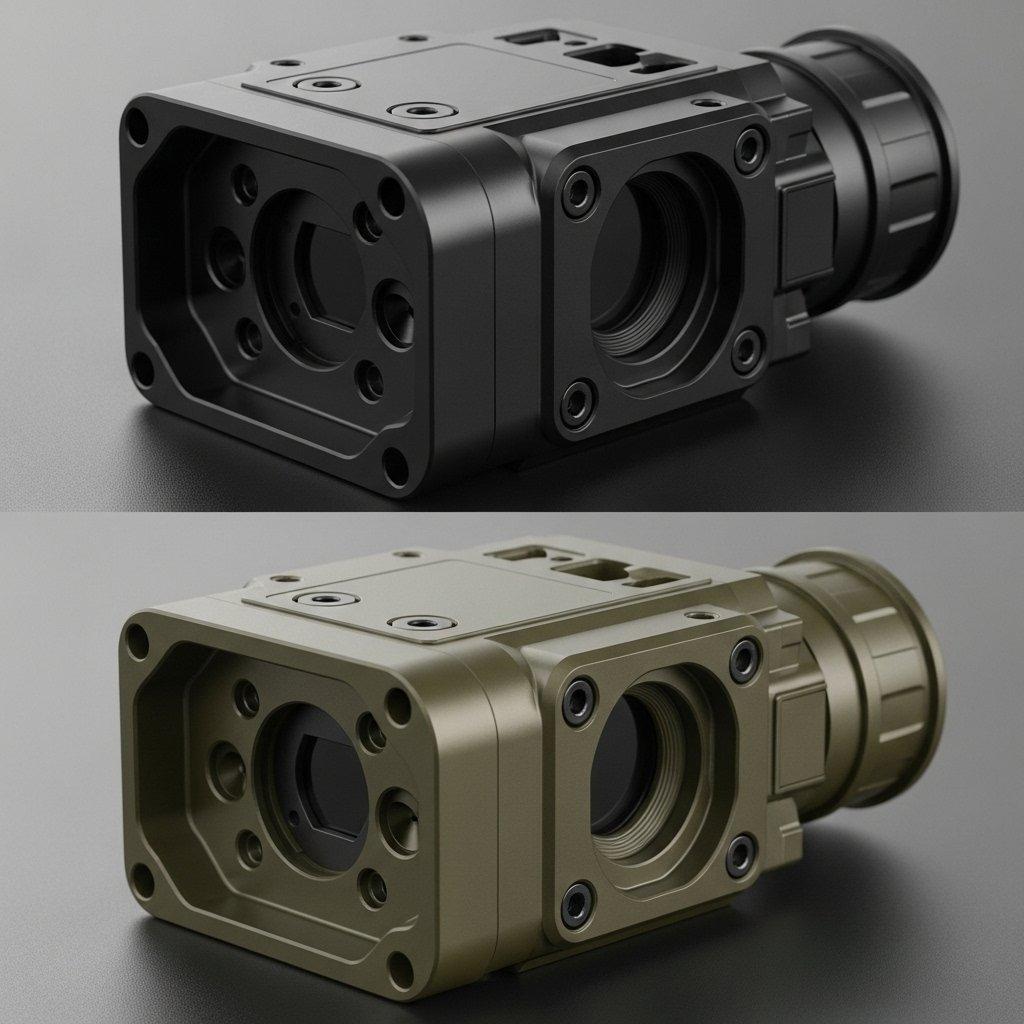Many innovative bicycle designs struggle to reach their full potential due to inconsistencies in manufacturing. Engineers and product managers often face the challenge of translating intricate digital models into physical components that meet rigorous performance and aesthetic standards. The gap between design intent and production reality can be a significant hurdle.
This disconnect frequently results in compromised performance, premature component failure, or a diminished user experience, ultimately impacting brand reputation and market adoption. We have observed instances where critical dimensions were not held, leading to misalignments in assemblies, or surface finishes were inadequate, causing accelerated wear or cosmetic defects. Such issues can trigger costly recalls, delay product launches, and erode customer trust in high-performance bicycle components.

Our integrated approach to precision CNC machining offers a pathway to meticulously transform your most ambitious bicycle component designs into tangible, high-quality realities. We provide the expertise and technology to bridge this critical gap, ensuring every part performs exactly as engineered.
Precision CNC machining is the definitive method for producing high-performance bicycle components, delivering unparalleled accuracy, durability, and design freedom from concept to the final product.
Understanding CNC Machining for Bicycle Parts
What is CNC Machining in Bicycle Production?
CNC machining in bicycle production leverages computer-controlled tools to precisely subtract material from a raw block, creating components with exceptional accuracy. This process is fundamental for manufacturing parts that require complex geometries and stringent dimensional control. It is a cornerstone of modern bicycle engineering.
Why CNC is Essential for Modern Bicycle Components
The demands of contemporary bicycle design, including lightweighting and aerodynamic optimization, necessitate manufacturing methods that can deliver extreme precision and repeatability. CNC technology meets these challenges by consistently producing components within tight tolerances. This ensures optimal fit, function, and performance across entire product lines.
Advantages of CNC for High-Performance Bicycle Parts
Utilizing CNC machining for bicycle components offers several distinct advantages. It enables the creation of parts with superior structural integrity and optimal material utilization. This leads to lighter, stronger, and more reliable components compared to traditional manufacturing techniques.
Enhanced Durability and Performance
Precision CNC machining directly contributes to the enhanced durability and performance of bicycle parts. By achieving precise fits and finishes, stress concentrations are minimized, extending component lifespan under rigorous riding conditions. This translates to a safer and more enjoyable riding experience.
Design Freedom and Customization
CNC technology empowers designers with unprecedented freedom to innovate complex shapes and intricate internal structures. This capability is critical for creating custom bicycle components that push the boundaries of aerodynamics, ergonomics, and material efficiency. It supports bespoke solutions for unique applications.

Bicycle Parts Design Optimization for CNC Machining
Design for Manufacturability (DFM) Principles
Implementing Design for Manufacturability (DFM) principles early in the design phase is paramount for efficient CNC machining of bicycle parts. This involves considering the machining process, material properties, and tooling limitations during the initial component conceptualization. Our engineering team routinely collaborates with clients on DFM.
Material Selection for CNC Bicycle Parts
The choice of material significantly impacts the machinability, weight, strength, and ultimate performance of bicycle components. High-performance alloys such as aluminum 6061 and 7075, as well as titanium, are commonly selected for their excellent strength-to-weight ratios and corrosion resistance. Each material requires specific machining parameters.
| Material Type | Primary Advantages | Common Bicycle Applications |
|---|---|---|
| Aluminum 6061 | Versatile, good strength/weight | Frames, hubs, stems, seatposts |
| Aluminum 7075 | High strength, excellent fatigue | Cranksets, high-stress components |
| Titanium | High strength, corrosion resistant | Frames, bolts, high-end components |
| Stainless Steel | Corrosion resistance, durability | Fasteners, small intricate parts |
Geometric Considerations for Efficient Machining
Optimizing component geometry for CNC machining involves minimizing deep pockets, avoiding excessively thin walls, and ensuring adequate corner radii. These considerations reduce machining time, minimize tool wear, and prevent material deformation. Thoughtful geometric design enhances part integrity and cost-effectiveness.
Specifying Tolerances and Surface Finishes
Accurate specification of dimensional tolerances and surface finishes is critical for the functionality and aesthetics of bicycle parts. Tighter tolerances typically increase machining complexity and cost but are essential for critical interfaces and moving assemblies. Surface finishes, such as Ra values, dictate friction and appearance.
| Tolerance Category | Typical Application | Impact on Performance |
|---|---|---|
| +/- 0.01 mm | Bearing bores, mating surfaces | Precise fit, reduced friction |
| +/- 0.05 mm | Structural components, general features | Reliable assembly, structural integrity |
| Surface Finish Ra < 0.8 µm | Sealing surfaces, aesthetic parts | Smooth operation, visual appeal |
| Surface Finish Ra < 3.2 µm | General structural surfaces | Corrosion resistance, functional fit |
Leveraging CAD/CAM for Optimal Bicycle Part Design
The synergistic use of CAD (Computer-Aided Design) and CAM (Computer-Aided Manufacturing) software is indispensable for advanced bicycle part design. CAD enables the precise creation and modification of 3D models, while CAM translates these models into machine-readable G-code for efficient CNC operation. This digital workflow ensures accuracy and consistency.

The Core CNC Machining Process for Bicycle Components
From CAD Model to CNC Program for Bicycle Parts
Once a bicycle part’s design is finalized in CAD, our CAM engineers meticulously develop the machining strategy. This involves selecting appropriate cutting tools, defining tool paths, optimizing cutting speeds and feeds, and simulating the entire process. The result is a precise CNC program ready for execution.
Machine Setup and Tooling for Component Production
Proper machine setup and selection of tooling are critical for successful production of custom bicycle components. We utilize advanced fixtures and workholding solutions to secure the raw material, ensuring stability during high-speed machining. The right cutting tools, chosen for material type and geometry, are essential for efficiency and surface quality.
Advanced CNC Machining Techniques for Bicycle Parts
To meet the rigorous demands of advanced bicycle part fabrication, we employ a range of sophisticated CNC techniques. These methods are designed to tackle complex geometries, achieve superior surface finishes, and maintain tight tolerances across diverse materials.
Multi-Axis Machining of Complex Geometries
Multi-axis (3-axis, 4-axis, 5-axis) CNC machining is indispensable for creating the complex, organic shapes often found in high-performance bicycle components. This allows tools to approach the workpiece from multiple angles, reducing the need for multiple setups and enabling intricate features in a single operation. This optimizes both precision and efficiency.
High-Speed Machining Strategies
High-speed machining (HSM) techniques are vital for rapidly and precisely removing material, particularly from softer alloys like aluminum. By using smaller cutting depths, higher feed rates, and specialized tooling, we can achieve excellent surface finishes and significantly reduce cycle times. This approach is critical for high-volume production.
Common Challenges in Bicycle Part Machining
Machining bicycle components presents unique challenges, including managing heat generation in thin-walled sections, preventing chatter marks, and controlling chip evacuation. Overcoming these requires a deep understanding of material science, advanced tooling, and optimized machining parameters. Our experience allows us to anticipate and mitigate these issues.

Quality Assurance in CNC Machined Bicycle Parts
In-Process Quality Control for Bicycle Components
Maintaining stringent quality control throughout the entire machining process is non-negotiable for precision bike parts production. We implement real-time monitoring of critical parameters, including tool wear and dimensional accuracy, using in-machine probing and sensor technology. This allows for immediate adjustments and defect prevention.
Final Inspection and Metrology for Finished Parts
Upon completion of machining, every bicycle component undergoes a comprehensive final inspection using advanced metrology equipment. Coordinate Measuring Machines (CMM) and optical comparators are employed to verify all critical dimensions, geometric tolerances, and surface finishes. This rigorous validation ensures compliance with design specifications.

Adhering to Industry Standards for Bicycle Components
We are committed to adhering to relevant industry standards for bicycle components, ensuring both safety and performance. This commitment extends to material certification, traceability, and documented quality management systems. Our processes are designed to meet or exceed established benchmarks for durability and reliability.
Post-Machining and Finishing of Bicycle Components
Essential Surface Treatments for CNC Bicycle Parts
After machining, many bicycle components require additional surface treatments to enhance their durability, corrosion resistance, and aesthetic appeal. These processes are integral to the advanced bicycle part fabrication workflow.
Anodizing and Protective Coatings
Anodizing is a common surface treatment for aluminum bicycle parts, creating a hard, corrosion-resistant oxide layer and allowing for vibrant color finishes. Other protective coatings, such as passivation for stainless steel or specialized ceramic coatings, are applied to further improve wear resistance and longevity.
Polishing, Blasting, and Deburring
Achieving the desired tactile and visual quality often involves processes like polishing, bead blasting, or deburring. Polishing creates a smooth, reflective surface, while blasting can achieve a matte or textured finish. Deburring meticulously removes any sharp edges or burrs left from machining, ensuring safety and optimal function.

Assembly and Integration Considerations
We also consider the downstream assembly and integration of CNC machined bicycle parts. Designs are often optimized for ease of assembly, with features that facilitate precise alignment and attachment to other components. Our goal is to deliver parts that seamlessly integrate into the final bicycle product.
Partnering for Expert Bicycle Part CNC Manufacturing
Choosing a High-Quality CNC Machining Supplier
Selecting the right CNC machining supplier is a critical decision that impacts project success, product quality, and cost-effectiveness. A high-quality partner offers not only advanced machinery but also deep technical expertise, robust quality control, and transparent communication throughout the process.
Our Expertise in Custom Bicycle Component Production
At ly-machining, located in Shenzhen, China, we specialize in custom bicycle components manufacturing, leveraging our state-of-the-art CNC facilities and extensive engineering experience. Our team excels in transforming complex designs into high-performance bike components, adhering to the most stringent specifications. We are a trusted source manufacturer.

Transparent Pricing and Technical Collaboration
We believe in fostering strong, collaborative partnerships built on transparency and mutual understanding. Our pricing structures are clear and competitive, with detailed breakdowns. We offer comprehensive technical consultation from the initial design phase through to final production, ensuring optimal outcomes and value engineering.
Conclusion: Elevating Bicycle Performance Through Precision CNC
Case Study: The Lightweight Suspension Linkage Challenge
Problem: A premium bicycle brand approached us with a challenging requirement for an ultra-lightweight and structurally complex suspension linkage. Their existing design, produced via conventional methods, suffered from excessive weight and lacked the precise geometric integrity needed for optimal suspension travel and long-term durability. The intricate shape made traditional manufacturing difficult and costly.
Our Solution: Our engineering team initiated a thorough Design for Manufacturability (DFM) analysis, identifying key areas for material optimization and geometric refinement.
We proposed utilizing aerospace-grade Aluminum 7075 for its exceptional strength-to-weight ratio, combined with a sophisticated 5-axis CNC machining strategy to achieve the intricate internal pockets and external contours. Our CAM programmers developed optimized tool paths to maintain tight tolerances across all critical interfaces and minimize material waste.
Result: Through our precision CNC machining expertise, we successfully manufactured the new suspension linkage.
The component achieved a significant weight reduction of 25% while surpassing the required structural integrity and fatigue resistance benchmarks. The precise fit and finish ensured smooth suspension operation, leading to a substantial improvement in the bike’s overall performance and rider experience. Our direct source manufacturing model also enabled accelerated prototyping and production, bringing the client’s enhanced product to market ahead of schedule.
Invite readers to get a free quote or technical consultation.
What materials are best for bike parts?
The optimal material depends on the specific component’s function and performance requirements. Aluminum alloys (6061, 7075) are popular for their strength-to-weight ratio and cost-effectiveness. Titanium is favored for high-end applications demanding superior strength, fatigue resistance, and corrosion immunity.
Other materials like stainless steel are used for fasteners and smaller, intricate parts requiring high durability. Our engineering team can guide you in selecting the best material for your unique custom bicycle components manufacturing needs.
How does CNC ensure part accuracy?
CNC machining ensures accuracy through automated, computer-controlled movements of cutting tools. This eliminates human error and allows for repeatable precision down to micron levels. Our integrated quality control systems, including in-process probing and CMM inspections, further validate every critical dimension.
This rigorous validation guarantees that each bicycle part meets precise design specifications. We adhere to tight tolerances, which are critical for the functionality and reliability of high-performance bike components.
What is DFM in bicycle component design?
DFM, or Design for Manufacturability, in bicycle component design is an engineering approach that optimizes a product’s design for efficient, cost-effective, and high-quality manufacturing. It involves considering material selection, geometric features, and machining processes early in the design phase.
By applying DFM principles, we streamline production, reduce potential manufacturing challenges, and ensure that the final product effectively translates the design intent. This collaboration results in superior custom bicycle components manufacturing.




